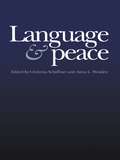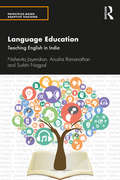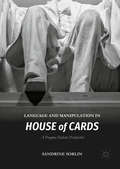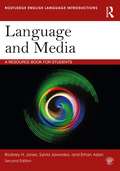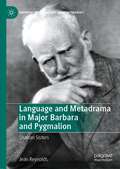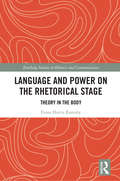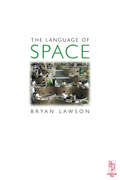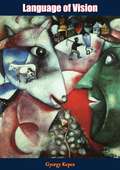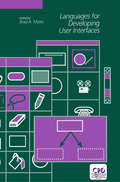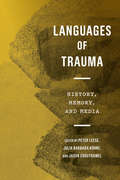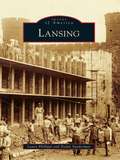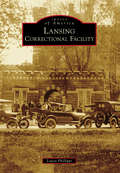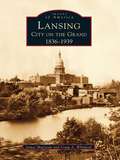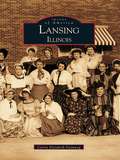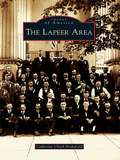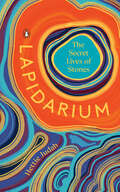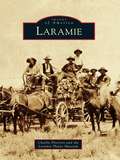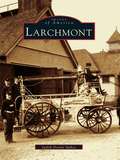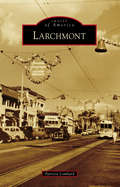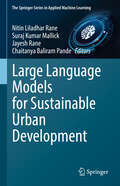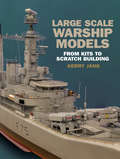- Table View
- List View
Language & Peace (War And Peace Ser. #Vol. 6)
by Christina Schäffne Anita L. WendenFirst published in 1999. Routledge is an imprint of Taylor & Francis, an informa company.
Language Education: Teaching English in India (Principles-based Adaptive Teaching)
by Nishevita Jayendran Anusha Ramanathan Surbhi NagpalThis book situates the teaching and learning of language in general, and English in particular, within the sociocultural context of India. It engages with current scholarship in literacy studies and the pedagogies of language acquisition and learning. The volume discusses the cultural, discursive and sociopolitical functions of language education and the teaching of English in Indian schools. It examines the importance of adopting flexible pedagogical and multimodal strategies in teaching vocabulary; grammar; literary genres like fiction, poetry and drama; rhetorical discourses; and communicative English to learners for whom English is not one of their home language(s). It also discusses pragmatic approaches to curriculum design for communicative competence and critical literacy rooted in theoretical principles of language education. The authors analyse issues relevant to secondlanguage acquisition; English language teaching (ELT); emergent, adult and critical literacies; and critical pedagogies in language and literature. Written in an accessible style, the book comes with case studies, exercises and additional references to support an independent exploration of the fields. This book will be of interest to students and teachers of language, literature and education, as well as teachers and educators in schools and universities. It is also of relevance to policymakers, non-governmental organisations and public and private sector bodies that work in the fields of language and literacy.
Language and Manipulation in House of Cards
by Sandrine SorlinThis book is to date the first monograph-length study of the popular American political TV series House of Cards. It proposes an encompassing analysis of the first three seasons from the unusual angles of discourse and dialogue. The study of the stylistic idiosyncrasies of the ruthless main protagonist, Frank Underwood, is completed by a pragmatic and cognitive approach exposing the main characters' manipulative strategies to win over the other. Taking into account the socio-cultural context and the specificities of the TV medium, the volume focuses on the workings of interaction as well as the impact of the direct address to the viewer. The book critically uses the latest theories in pragmatics and stylistics in its attempt at providing a pragma-rhetorical theory of manipulation.
Language and Media: A Resource Book for Students (Routledge English Language Introductions)
by Rodney H. Jones Sylvia Jaworska Erhan AslanRoutledge English Language Introductions cover core areas of language study and are one-stop resources for students. Assuming no prior knowledge, books in the series offer an accessible overview of the subject, with activities, study questions, sample analyses, commentaries, and key readings—all in the same volume. The innovative and flexible 'two-dimensional' structure is built around four sections—introduction, development, exploration, and extension— which offer self-contained stages for study. Each topic can also be read across these sections, enabling the reader to build gradually on the knowledge gained. This revised second edition of Language and Media: Provides an accessible introduction and comprehensive overview of the major approaches and methodological tools used in the study of language and media. Focuses on a broad range of media and media content from more traditional print and broadcast media formats to more recent digital media formats. Incorporates practical examples using real data, including newspaper articles, press releases, television shows, advertisements (print, broadcast, and digital), blogs, social media content, internet memes, culture jamming, and protest signs. Includes key readings from leading scholars in the field, such as Jan Blommaert, Sonia Livingstone, David Machin, Martin Montgomery, Ruth Page, Ron Scollon, and Theo van Leeuwen. Offers a wide range of activities, questions, and points for further discussion. The book emphasises the increasingly creative ways ordinary people are engaging in media production. It also addresses a number of urgent current concerns around media and media production/reception, including fake news, clickbait, virality, and surveillance. Written by three experienced teachers and authors, this accessible textbook is an essential resource for all students of English language and linguistics.
Language and Metadrama in Major Barbara and Pygmalion: Shavian Sisters (Bernard Shaw and His Contemporaries)
by Jean ReynoldsThis book focuses on two important topics in Shaw’s Major Barbara and Pygmalion that have received little attention from critics: language and metadrama. If we look beyond the social, political, and economic issues that Shaw explored in these two plays, we discover that the stories of the two “Shavian sisters”— Barbara Undershaft and Eliza Doolittle—are deeply concerned with performance and what Jacques Derrida calls “the problem of language.” Nearly every character in Major Barbara produces, directs, or acts in at least one miniature play. In Pygmalion, Henry Higgins is Eliza’s acting coach and phonetics teacher, as well as the star of an impromptu, open-air phonetics show. The language content in these two plays is just as intriguing. Did Eliza Doolittle have to learn Standard English to become a complete human being? Should we worry about the bad grammar we hear at Barbara Undershaft’s Salvation Army shelter? Is English losing its precision and purity? Meanwhile, in the background, Shaw keeps reminding us that language and theatre are always present in our everyday lives—sometimes serving as stabilizing forces, and sometimes working to undo them.
Language and Power on the Rhetorical Stage: Theory in the Body (Routledge Studies in Rhetoric and Communication)
by Fiona Harris RamsbyThrough a fusion of narrative and analysis, Language and Power on the Rhetorical Stage examines how theater can enact critical discourse analysis and how micro-instances of iniquitous language use have been politically and historically reiterated to oppress and deny equal rights to marginalized groups of people. Drawing from Aristophanes’ rhetorical plays as a template for rhetoric in action, the author poses the stage as a rhetorical site whereby we can observe, see, and feel 20th-century rhetorical theories of the body. Using critical discourse analysis and Judith Butler’s theories of the performative body as a methodological and analytical lens, the book explores how a handful of American plays in the latter part of the 20th century—the works of Tony Kushner, Suzan Lori-Parks, and John Cameron Mitchell, among others— use rhetoric in order to perform and challenge marginalizing language about groups that are not offered center stage in public and political spheres. This innovative study initiates a conversation long overdue between scholars in rhetorical and performance studies; as such, it will be essential reading for academic researchers and graduate students in the areas of rhetorical studies, performance studies, theater studies, and critical discourse analysis.
Language of Space
by Bryan LawsonThis unique guide provides a systematic overview of the idea of architectural space. Bryan Lawson provides an ideal introduction to the topic, breaking down the complex and abstract terms used by many design theoreticians when writing about architectural space. Instead, our everyday knowledge is reintroduced to the language of design. Design values of 'space' are challenged and informed to stimulate a new theoretical and practical approach to design.This book views architectural and urban spaces as psychological, social and partly cultural phenomena. They accommodate, separate, structure, facilitate, heighten and even celebrate human spatial behaviour.
Language of Space and Form
by James EcklerA unique graphical guide for using architectural terminology to jump-start the design process This design studio companion presents architectural terms with special emphasis on using these terms to generate design ideas. It highlights the architectural thinking behind the terminology and helps readers gain a thorough understanding of space and form. Featuring double-page spreads with over 190 illustrated entries, the book fully explores, analyzes, and cross-references key elements and techniques used in architecture and interior design. Each entry first defines the common meaning of the term, then goes on to discuss in detail its generative possibilities. Scenarios involving the use of a design principle, or the way it might be experienced, further aid students in developing strategies for their own design. In addition, Language of Space and Form: Divides entries into five categories for quick access to concepts, including process and generation, organization and ordering, operation and experience, objects and assemblies, and representation and communication Addresses studio practice from the ground up, encouraging readers to develop creativity and critical thinking as they develop a design process Offers supplemental online learning resources, including exercises that correspond to the book A must-have reference for professionals and students in architecture and interior design, Language of Space and Form is destined to become a classic introduction to design thinking.
Language of Vision
by Gyorgy KepesLANGUAGE OF VISION is a timely, courageous book without parallel in its field. It deals with present-day problems of visual expression from a realistic and human point of view, and endeavors to escape from the narrow confines of the laboratory, preserving the closest possible contact with our experiences of every day life. It makes an extensive analysis of the structure and function of the graphic image in painting, photography and advertising design. It inquires deeply into the laws of visual organization and evaluates in contemporary terms the various representation devices conceived by artists of all ages such as—size, vertical location, overlapping, transparency, perspective, interpenetration, light and color, movement, etc., etc.318 illustrations supplement the text. There is a great variety of subject matter, techniques and media. They include photograms, photomontages and collages; analytical diagrams, typography, calligraphy and lettering; pre-historic art, paintings and drawings by children; significant work of the old masters and contemporary artists including Arp, Braque, Duchamp, Degas, Juan Gris, Helion, Klee, Kandinsky, Leger, Malevich, Matisse, Moholy-Nagy, Miro, Mondrian, Picasso, Seurat and many others. Advertising design by Bayer, Binder, Beall, Burtin, Cassandre, Carlu, Doesburg, Lissitzky, Man Ray, McKnight Kauffer, Sutnar, Tschichold, etc., etc.LANGUAGE OF VISION with its completely new concept of appraisal and revaluation is a book of vital importance to every one who feels the urgent need for a clearer understanding of the structure and function of art in our society.
Language, Youth and Identity in the 21st Century
by Jacomine Nortier Bente A. SvendsenThe language of young people is central in sociolinguistic research, as it is seen to be innovative and a primary source of knowledge about linguistic change and the role of language. This volume brings together a team of leading scholars to explore and compare linguistic practices of young people in multilingual urban spaces, with analyses ranging from grammar to ideology. It includes fascinating examples from cities in Europe, Africa, Canada and the US to demonstrate how young people express their identities through language, for example in hip-hop lyrics and new social media. This is the first book to cover the topic from a globally diverse perspective, and it investigates how linguistic practices across different communities intersect with age, ethnicity, gender and class. In doing so it shows commonalities and differences in how young people experience, act and relate to the contemporary social, cultural and linguistic complexity of the twenty-first century.
Languages for Developing User Interfaces
by Brad A. MyersThis book brings together a number of researchers and developers from industry and academia who report on their work. It is of interest to language designers and the creators of toolkits, UIMSs, and other user interface tools.
Languages of Trauma: History, Memory, and Media (G - Reference,information And Interdisciplinary Subjects Ser.)
by Peter Leese Jason Crouthamel Julia Barbara KöhneThis volume traces the distinct cultural languages in which individual and collective forms of trauma are expressed in diverse variations, including oral and written narratives, literature, comic strips, photography, theatre, and cinematic images. The central argument is that traumatic memories are frequently beyond the sphere of medical, legal, or state intervention. To address these different, often intertwined modes of language, the contributors provide a variety of disciplinary approaches to foster innovative debates and provoke new insights. Prevailing definitions of trauma can best be understood according to the cultural and historical conditions within which they exist. Languages of Trauma explores what this means in practice by scrutinizing varied historical moments from the First World War onwards and particular cultural contexts from across Europe, the United States, Asia, and Africa – striving to help decolonize the traditional Western-centred history of trauma, dissolving it into multifaceted transnational histories of trauma cultures.
Lanny: A Novel
by Max PorterLonglisted for the 2019 Booker PrizeAn entrancing new novel by the author of the prizewinning Grief Is the Thing with FeathersThere’s a village an hour from London. It’s no different from many others today: one pub, one church, redbrick cottages, some public housing, and a few larger houses dotted about. Voices rise up, as they might anywhere, speaking of loving and needing and working and dying and walking the dogs. This village belongs to the people who live in it, to the land and to the land’s past.It also belongs to Dead Papa Toothwort, a mythical figure local schoolchildren used to draw as green and leafy, choked by tendrils growing out of his mouth, who awakens after a glorious nap. He is listening to this twenty-first-century village, to its symphony of talk: drunken confessions, gossip traded on the street corner, fretful conversations in living rooms. He is listening, intently, for a mischievous, ethereal boy whose parents have recently made the village their home. Lanny.With Lanny, Max Porter extends the potent and magical space he created in Grief Is the Thing with Feathers. This brilliant novel will ensorcell readers with its anarchic energy, with its bewitching tapestry of fabulism and domestic drama. Lanny is a ringing defense of creativity, spirit, and the generative forces that often seem under assault in the contemporary world, and it solidifies Porter’s reputation as one of the most daring and sensitive writers of his generation.
Lansing (Images of America)
by Nolan Sunderman Laura PhillippiFounded by Civil War veteran William Lansing Taylor, Lansing is home to a population quickly approaching 11,000 residents. It is also home to the Lansing Correctional Facility (formerly the Kansas State Penitentiary), the oldest prison in Kansas. Designed by Erasmus Carr, architect of the Kansas State Capitol, the building has stood watch over the area for more than 140 years. As one will find, Lansing and the prison have grown together and mutually benefitted each other. Lansing is also home to Mount Muncie Cemetery, one of the oldest cemeteries in the state. It is the resting place of several famous people, including Fred Harvey. The photographs in this book are glimpses into time of a small village with one-room schools to a bustling community with one of the busiest north-south highways in Kansas.
Lansing Correctional Facility
by Laura PhillippiSince 1868, the Lansing Correctional Facility (formerly the Kansas State Penitentiary) has stood watch over what would become the city of Lansing. Designed by Erasmus Carr, architect of the Kansas State Capitol, the prison is the oldest in Kansas. In the beginning, it housed male and female inmates from Kansas and Oklahoma, as well as inmates serving federal sentences. Today, the facility's population of minimum, medium, maximum, and special management custody offenders is approximately 2,400. Leavenworth County has also seen the addition of the United States Disciplinary Barracks, United States Penitentiary-Leavenworth, and Corrections Corporation of America-Leavenworth, making it the only county in the country to host a state, military, federal, and private prison. Images of America: Lansing Correctional Facility features photographs of the early days, when inmates were on the "silent system" and could not speak to one another, to more modern times when rehabilitation has become an important component of prison life.
Lansing, City on the Grand: 1836-1939 (Images of America)
by James Maclean Craig A. WhitfordLansing's history as the capital of Michigan began with a legislative mandate in the 1835 State Constitution, which required that the seat of government be moved from Detroit in 1847. The result-the emergence of a new capital city on the banks of the majestic Grand River-allowed Lansing to cultivate a world-class community based in government, education, the automotive industry, and entrepreneurial achievements. This book features more than 200 historic photographs that document the dynamic capital city during its pivotal first century, from the pioneer era to the inception of the Olds Motor Vehicle Company and through the eve of World War II.
Lansing: Illinois (Images of America)
by Carrie Elizabeth SteinwegLansing, Illinois, is a village that is "proud of its past, confident in its future," according to the signs at its entrance. That proud past began in the 1840s, when Dutch and German settlers first made their way to the area. The town was named for Henry Lansing, who came to the area in 1846 with his brothers, John and George. Through the medium of historic photographs, this book captures the evolution of the people of Lansing, from the late-1800s to the present day. These pages bring to life the people, events, communities, and industries that helped to shape and transform Lansing. With nearly 200 vintage images, Lansing, Illinois, includes photographs of the Indiana Avenue School, the Brickyards, the Ford Airport, and early businesses and business owners. It is hard to imagine Ridge Road, now a bustling center of commerce, as a dirt road scattered with general stores, taverns, and blacksmith shops. This book will take you back to Lansing's simpler days to give the reader a glimpse of why this community has maintained its appeal and held generations of families here in this warm and friendly place.
Lapeer Area, The
by Catherine Ulrich BrakefieldLegends about the Ottawa, Chippewa, and Nepessing Indians have left an indubitable mark upon the Lapeer area. Streets, rivers, and towns sing out the melody of their ageless legacy, just as those first settlers of Lapeer left their footprints upon the towns and cities for generations to follow. Like a comfortable rocker, the lyrics of hospitality linger, whispering of a way of life not easily left within the pages of a history book. Frugal, yet compassionate, these early pioneers shared their meager provisions and scant shelters with the tribes and wayward travelers alike. Lumberjacks sawed and farmers harvested their crops, threshed their grain, raised their barns, and worshipped together. Feuds never lasted and families never parted. The people of the Lapeer area worked, voted, and played together, creating a place of beauty for the generations they would never know. The gentle rolling hillsides still ring with their music, whether it is the moccasin footsteps of the first hunter, the boot-clad lumberjack or farmer, or the European tradition of riding to the hounds-for here the panoramic view of the Lapeer area comes alive with heritage, horses, and hills.
Lapidarium: The Secret Lives of Stones
by Hettie JudahInspired by the lapidaries of the ancient world, this book is a beautifully designed collection of true stories about sixty different stones that have influenced our shared historyThe earliest scientists ground and processed minerals in a centuries-long quest for a mythic stone that would prolong human life. Michelangelo climbed mountains in Tuscany searching for the sugar-white marble that would yield his sculptures. Catherine the Great wore the wealth of Russia stitched in gemstones onto the front of her bodices. Through the realms of art, myth, geology, philosophy and power, the story of humanity can be told through the minerals and materials that have allowed us to evolve and create. From the Taiwanese national treasure known as the Meat-Shaped Stone to Malta&’s prehistoric &“fat lady&” temples carved in globigerina limestone to the amethyst crystals still believed to have healing powers, Lapidarium is a jewel box of sixty far-flung stones and the stories that accompany them. Together, they explore how human culture has formed stone, and the roles stone has played in forming human culture.
Laramie
by Laramie Plains Museum Charlie PetersenWhile it was still part of Dakota Territory, the town of Laramie was founded in 1868 with the arrival of the Union Pacific Railroad. Laramie's placement on the high plains at an elevation of 7,200 feet hasnot made for an easy existence, but the hardy ranching families and cowboys, with their cattle hunkered down against the winds and snow, survived in spite of their harsh surroundings and even thrived in this unique eastern Wyoming town. This is the place where the infamous Jack McCall hid from the authorities, where Teddy Roosevelt rode the range, and where Butch Cassidy was held at the Wyoming Territorial Prison. From its early, rowdy days as an end-of-the-tracks tent town on the railroad, with gambling halls and an active nightlife, through the growing-up years of mills, quarries, and local wartime heroes, to the establishment of Wyoming's only state university, Laramie's remarkable story is told here through historic photographs.
Laramie Railroads
by Jerry Hansen Lawrence OstreshOn July 1, 1862, President Lincoln signed the Pacific Railway Act. This act created the Union Pacific Railroad and authorized government loans and land grants to aid in the construction of the nation's first transcontinental railroad, which would connect Omaha, Nebraska, to Sacramento, California. As the Union Pacific raced west across prairies, mountains, and basins in 1867 and 1868, the Territory of Wyoming and many of its southern towns and cities were founded, including Laramie. In 1869, the Union Pacific met the Central Pacific at Promontory Summit, Utah, and the transcontinental railroad was complete. This is the story of the railroads of Laramie, a fabled place along the Union Pacific's Overland Route.
Larchmont
by Judith Doolin SpikesLarchmont has always been distinguished from other settlements north of New York City by its thirteen acres of public-access shoreline and glaciated coast on Long Island Sound. Settled in the early 1800s, it became a resort community after wealthy New Yorkers began buying up abandoned farmland to create country estates. It rose to international fame on the coattails of the Larchmont Yacht Club.
Larchmont
by Patricia LombardLarchmont Boulevard is more than a street; it is the soul and spine of the surrounding neighborhoods created in the early 1900s when Los Angeles was just coming into its own. Located in the heart of Los Angeles, Larchmont Boulevard is a charming, walkable street running north and south from Third Street to Melrose Avenue that gives residents and visitors the feeling of a small town tucked inside the vast, car-centric city of Los Angeles. This book tells the story of Larchmont's beginnings in 1921 when the Los Angeles Times reported that developers Julius La Bonte and Charles Ramson had purchased seven lots on Larchmont Boulevard to create a business district of 30 stores between First Street and Beverly Boulevard. The one-block stretch, where a trolley line once ran, is affectionately known as "the village" by locals in the surrounding neighborhoods of Brookside, Citrus Square, Country Club Heights, Fremont Place, Hancock Park, La Brea-Hancock, Larchmont Village, Melrose, Oakwood-Maplewood-St. Andrews, Ridgewood-Wilton/St. Andrews Square, Sycamore Square, Western-Wilton, Wilshire Park, Windsor Square, and Windsor Village.
Large Language Models for Sustainable Urban Development (The Springer Series in Applied Machine Learning)
by Chaitanya Baliram Pande Nitin Liladhar Rane Suraj Kumar Mallick Jayesh RaneWith rapid urbanization defining the 21st Century, cities face mounting challenges in achieving sustainability, equity, and functionality. This book explores how innovative technologies such as Artificial Intelligence (AI) and Large Language Models (LLMs) can transform urban development by offering intelligent, data-driven solutions. LLMs go beyond automation, acting as co-creators in addressing environmental sustainability, resource management, and equitable development. By analyzing regulations, best practices, and real-time data on phenomena such as air pollution and traffic, these models empower urban planners to design smarter, more sustainable cities while fostering collaboration across disciplines. Divided into five sections, the book explores the diverse applications of LLMs, from optimizing renewable energy systems and enhancing urban planning to revolutionizing construction practices and improving resource efficiency. It highlights case studies on integrating AI with smart infrastructure, ecological balance, and disaster resilience. While underscoring their transformative potential, the book also examines ethical considerations such as bias, privacy, and environmental impact. More than a collection of research, this work is a call to action for urban planners, data scientists, policymakers, and researchers to harness AI responsibly in building greener, more equitable urban futures.
Large Scale Warship Models: From Kits to Scratch Building
by Kerry JangThis illustrated guide presents step-by-step instructions and techniques for warship modelers ready for the challenge of building at larger scales. Many warship modelers who work in smaller scales are daunted by the challenge of tackling something larger. But in Large Scale Warship Models, expert modeler Kerry Jang demonstrates that it&’s not as difficult as it may seem. In fact, any experienced modeler will already possess the basic skills required. This volume covers the essential new techniques for working in scales that capture the grandeur of actual ships. In the first part of the book, Jang discusses how to choose between a kit, a semi-kit or building from scratch. He also covers what conventional kit building skills are transferable to work on large-scale projects. Novel requirements like research, obtaining plans and sourcing material or fittings are also covered. The second part describes building methods, including the latest techniques like casting fittings in resin. These methods apply to both static and radio-controlled models. Original color photos illustrate each chapter, and the book concludes with a gallery of superb models intended to inspire the would-be large-scale warship modeler to take the plunge.
